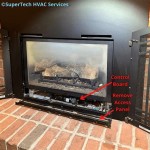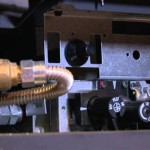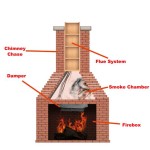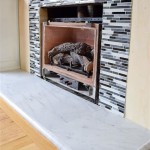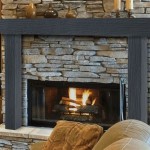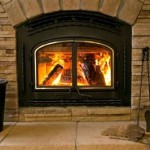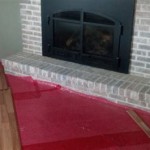The Allure and Application of Indoor/Outdoor See-Through Gas Fireplaces
Indoor/outdoor see-through gas fireplaces are increasingly popular architectural features, offering both aesthetic appeal and functional heating. These fireplaces are designed to be installed in a wall that separates an indoor and outdoor space, providing a visual connection and shared warmth. They serve as a focal point in both environments, enhancing the ambiance and increasing the property value.
The design principles behind these fireplaces focus on creating a seamless transition between the interior and exterior. By allowing a view of the flames from both sides, the fireplace adds a sense of spaciousness and openness. This is particularly beneficial in smaller homes or properties where maximizing the perception of space is desired. The symmetrical design requires careful planning and precise installation to ensure safety and optimal performance.
The selection of materials is crucial for withstanding the elements. Durable, weather-resistant materials such as stainless steel, tempered glass, and specialized coatings are used to protect the fireplace from rain, snow, and extreme temperatures. The gas lines and venting systems are engineered to meet both indoor and outdoor safety standards, mitigating risks associated with carbon monoxide and fire hazards.
The functionality of indoor/outdoor see-through gas fireplaces extends beyond mere aesthetics. They provide supplemental heating for both interior rooms and outdoor living areas like patios or decks. This extends the usability of outdoor spaces during cooler months, allowing for year-round enjoyment. The heat output can be adjusted to suit the specific needs of each space, enhancing comfort levels for various activities.
Key Considerations for Installation and Design
One of the most critical aspects of installing an indoor/outdoor see-through gas fireplace is the building code compliance. Regulations vary depending on the location, but generally, adherence to national standards like ANSI (American National Standards Institute) and CSA (Canadian Standards Association) is essential. Permits are typically required, and inspections are conducted to ensure that the installation meets all safety requirements.
Proper venting is paramount. Gas fireplaces produce combustion gases that need to be safely exhausted away from the living spaces. Direct vent systems are commonly used, as they draw combustion air from outside and expel exhaust gases directly outside as well, preventing indoor air contamination. The venting system must be correctly sized and installed to ensure proper draft and prevent backdrafting, which could lead to carbon monoxide poisoning.
Framing and structural support are also significant considerations. The fireplace unit is heavy and requires a robust frame to hold its weight. The wall opening must be precisely constructed to match the fireplace dimensions, and the surrounding structure needs to be reinforced to handle the additional load. Professional contractors often use steel framing or reinforced concrete to ensure structural integrity.
The finishing materials used around the fireplace contribute to the overall aesthetic. Non-combustible materials such as stone, brick, tile, or metal are typically used to frame the fireplace opening. These materials not only enhance the visual appeal but also provide a fire-resistant barrier to protect the surrounding walls and surfaces. The selection of finishing materials should complement the interior and exterior design styles, creating a cohesive look.
Fuel Options and Environmental Impact
Indoor/outdoor see-through gas fireplaces typically use either natural gas or propane as fuel. Natural gas is usually supplied through a municipal pipeline, while propane is stored in tanks. The choice between the two depends on factors such as availability, cost, and environmental considerations.
Natural gas is generally more economical than propane in areas where it is readily available. However, it requires a connection to a gas line, which may not be feasible in all locations. Propane offers greater flexibility, as it can be used in remote areas without access to natural gas infrastructure. Propane tanks need to be refilled periodically, adding to the ongoing maintenance requirements.
The environmental impact of gas fireplaces is a growing concern. While gas is a relatively clean-burning fuel compared to wood, it still produces greenhouse gas emissions, including carbon dioxide and methane. High-efficiency gas fireplaces are designed to minimize emissions and maximize heat output, reducing their environmental footprint. Some models also incorporate features like electronic ignition and variable flame control to further conserve energy.
Alternative fuel options, such as ethanol, are also available for some fireplace models. Ethanol is a renewable fuel derived from plant sources, offering a more sustainable alternative to fossil fuels. However, ethanol fireplaces typically produce less heat than gas fireplaces and may require more frequent refueling.
Styles, Features, and Technological Advancements
Indoor/outdoor see-through gas fireplaces are available in a wide range of styles to suit various architectural designs. Linear fireplaces, with their long, horizontal flames, are popular for contemporary homes. Traditional fireplaces, with their classic brick or stone surrounds, are well-suited for more traditional settings. Corner fireplaces, with their angled designs, can fit into tight spaces while still providing a dramatic focal point.
Features such as remote control operation, thermostatic controls, and programmable timers enhance the convenience and usability of these fireplaces. Remote controls allow users to adjust the flame height, heat output, and fan speed from anywhere in the room. Thermostatic controls maintain a consistent temperature, preventing overheating and conserving energy. Programmable timers allow users to set the fireplace to turn on and off at specific times, adding to the convenience and energy efficiency.
Technological advancements have led to the development of smart fireplaces that can be controlled via smartphone apps or voice commands. These smart fireplaces offer advanced features such as remote monitoring, diagnostic alerts, and integration with home automation systems. They allow users to control their fireplace from anywhere in the world, ensuring that it is always operating efficiently and safely.
Realistic flame effects are another key feature of modern gas fireplaces. Advanced burner technologies and ceramic logs are used to create flames that mimic the look and feel of a traditional wood-burning fire. Some models even incorporate ember beds and glowing embers to enhance the realism. The result is a visually stunning fireplace that provides the ambiance of a wood-burning fire without the mess and hassle.
The glass used in see-through gas fireplaces is typically tempered glass or ceramic glass, which is designed to withstand high temperatures and thermal shock. Tempered glass is stronger than regular glass and will shatter into small, blunt pieces if broken, reducing the risk of injury. Ceramic glass is even more heat-resistant and can withstand temperatures up to 1300 degrees Fahrenheit. The glass is also treated with a special coating to minimize glare and reflection, ensuring a clear view of the flames from both sides.
The aesthetic customization options for indoor/outdoor see-through gas fireplaces are vast. Firebox options range from traditional log sets to contemporary glass media, stones, and metal sculptures. The surrounds can be customized with a variety of materials, including natural stone, brick, tile, and metal. The colors and textures can be chosen to match the interior and exterior design styles, creating a cohesive and visually appealing look. Lighting options, such as LED accent lights, can be added to further enhance the ambiance and highlight the fireplace's features.
Ultimately, the design and installation of an indoor/outdoor see-through gas fireplace require careful planning and attention to detail. Working with experienced professionals, including architects, contractors, and fireplace specialists, is essential to ensure that the project is completed safely, efficiently, and to the highest standards.

36 Fortress Indoor Outdoor Intellifire See Thru Direct Vent Fireplace Electronic Ignition Monessen

See Thru Linear Gas Fireplaces Modern The Davinci Collection

Rushmore 40 Inch See Through Direct Vent Fireplace Fine S Gas

Callaway See Thru Outdoor Linear Gas Fireplace Kozy Heat

Outdoor Lifestyle Twilight Modern 36 Indoor See Through Gas Fireplaces Usa

Astria See Thru Gas Fireplace Montebello Through The Club

See Thru Linear Gas Fireplaces Modern The Davinci Collection
Outdoor Lifestyles Fortress See Through Indoor Gas Fireplace Majestic S

Double Sided Indoor Outdoor Fireplace Heat Glo

Twilight 36 Modern Indoor Outdoor See Through Gas Fireplace With Inte Soothing Company
Related Posts

